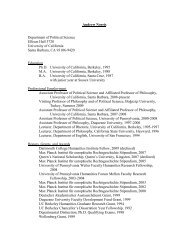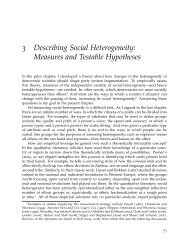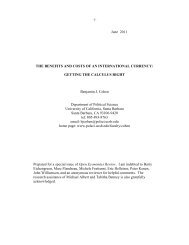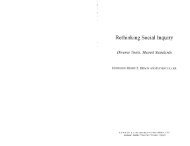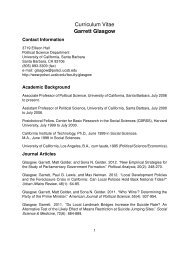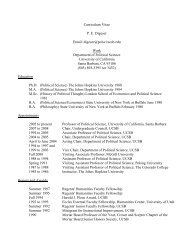-1- May 2012 THE YUAN'S LONG MARCH* Benjamin J. Cohen Can ...
-1- May 2012 THE YUAN'S LONG MARCH* Benjamin J. Cohen Can ...
-1- May 2012 THE YUAN'S LONG MARCH* Benjamin J. Cohen Can ...
Create successful ePaper yourself
Turn your PDF publications into a flip-book with our unique Google optimized e-Paper software.
-6-<br />
bank and chief financial regulator – to act as its proxy.<br />
As early as 2004 the HKMA launched the RMB Business Scheme, allowing banks in<br />
Hong Kong to open yuan deposit accounts for individuals and some enterprises. But the offshore<br />
deposit market, informally known as the CNH market, 5 did not really begin to take off until mid-<br />
2010, when new rules were issued relaxing restrictions on the yuan activities of Hong Kong<br />
banks. Daily trading of the RMB on the Hong Kong foreign-exchange market was now<br />
permitted, and local financial institutions for the first time were allowed to open yuan accounts of<br />
their own, clearing the way for creation of a wider range of marketable financial products. The<br />
result was a swift growth in the total value of CNH deposits, from less than 65 billion yuan ($10<br />
billion) at the end of 2009 to as much as 627 billion yuan ($100 billion) in November 2011,<br />
before dropping back below 570 billion yuan in early <strong>2012</strong>.<br />
Development of an offshore market for yuan-denominated bonds began in mid-2007,<br />
when selected Mainland banks were permitted for the first time to raise funds by issuing RMB<br />
bonds in Hong Kong. Progress in the so-called “Dim Sum” bond market, however, was slow<br />
until 2010, when permission was extended first to Chinese non-financial firms and then to foreign<br />
multinationals doing business in China. Among the first non-Chinese companies to enter, in June<br />
2010, were Hong Kong and Shanghai Banking Corporation (HSBC) and the Bank of East Asia,<br />
followed later by such big names as McDonald’s, Caterpillar, Volkswagen, and Unilever. In<br />
2011 new issues topped 174 billion yuan ($27.6 billion), up from 40 billion yuan ($6.3 billion) in<br />
2010 and a cumulative total of just 22 billion yuan ($3.3 billion) previously – a not insignificant<br />
rate of increase, but still minuscule amounts by international standards.<br />
Finally, parallel to the Dim Sum market, a nascent onshore market for yuan-denominated<br />
bonds, centered in Shanghai, has been cautiously cultivated since 2005, when debt sales by non-<br />
Chinese issuers – known as “Panda” bonds -- were authorized inside China for the first time.<br />
Progress here, however, has been extremely sluggish, even after a well publicized pledge by<br />
China’s State Council in 2009 to transform Shanghai into an international financial center by no<br />
later than 2020. Initially limited just to “eligible” multilateral development institutions, access to<br />
the Panda bond market was broadened in 2009 to include locally incorporated subsidiaries of<br />
foreign multinationals. But as of the start of 2011, there had still only been five issues in all – two<br />
each by the Asian Development Bank and the International Finance Corporation, a branch of the<br />
World Bank, and one by Tokyo-Mitsubishi UFJ (China) Ltd, for a total of just 5 billion yuan<br />
($795 million).<br />
STRATEGIC DESIGN<br />
Overall, there seems little doubt that internationalization has indeed assumed a place at the<br />
heart of China’s financial strategy. But an international currency, clearly, is not an end in itself.<br />
Rather, the yuan’s Long March must be seen as a means to promote more fundamental interests<br />
and aspirations. That raises the question of strategic design. What are Beijing’s ultimate goals,<br />
and is the government’s strategy properly conceived to achieve them?<br />
The question of design matters because internationalization is by no means a journey with<br />
a single unique destination. Currency internationalization involves multiple roles; the net benefits<br />
of individual roles may vary quite considerably; and different currencies may embody diverse


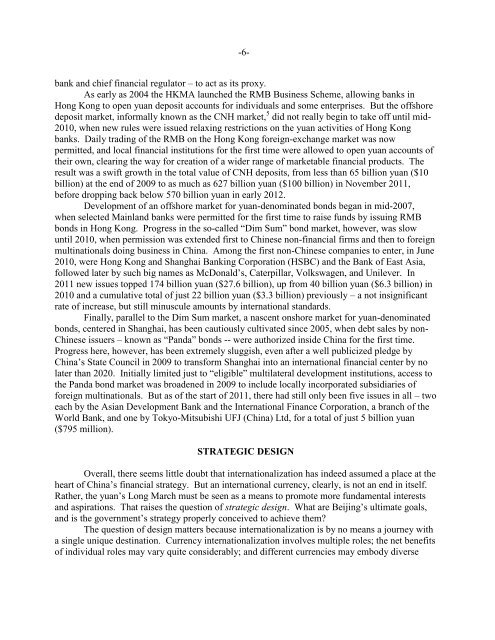

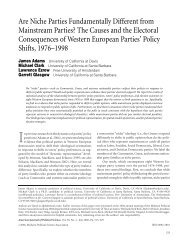
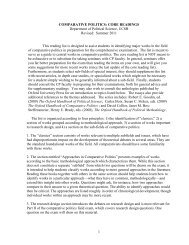
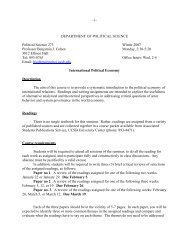

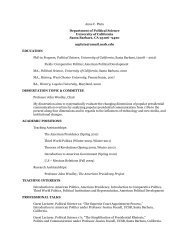
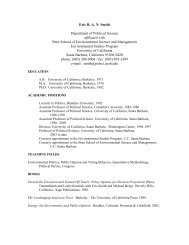
![Curriculum Vitae [abbreviated] John T. Woolley Professor of Political ...](https://img.yumpu.com/25423597/1/190x245/curriculum-vitae-abbreviated-john-t-woolley-professor-of-political-.jpg?quality=85)
